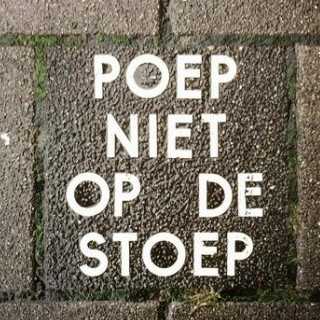Dutch vs Flemish: Important Similarities And Differences
 Written byFergus O'Sullivan
Written byFergus O'Sullivan- Read time8 mins
- Comments0

If you’re learning Dutch in Holland and venture south of the border to Belgium, you might be in for a shock: on paper they may be the same language, but the reality sounds different.
Going from south to north isn’t much better, either: going from the dulcet tones of Flanders to the scraping of Holland is a grating experience.
In this guide, we’ll go over the main differences between Dutch and Flemish to help you get acclimated to the differences.
Is Flemish its own language or a Dutch dialect?
Before we start, though, let’s quickly (very quickly) go over the discussion of whether Flemish is a separate language compared to Dutch or not.
In recent years, more and more people on both sides of the border and beyond are treating the Dutch of Flanders, called Flemish or Vlaams, as a language separate from the Dutch of the Netherlands.
This is somewhat understandable: even for native speakers from Holland Flemish can be impenetrable.
I remember one time in a village pub in Flanders where ordering a coffee, a mineral water and a small beer was a 10-minute interaction; in the end I had to repeat my order in French.
However, many linguists from both sides of the border insist it’s still one language, like in this paper.
According to them, Flemish is just a variant like any other Dutch dialect.
That said, many people you’ll meet will assert Flemish is a separate language; it all depends on who you’re talking to.
This means you’ll see several ways of describing the Dutch of Belgium including “dialect” and “language,” though you’ll encounter “language variant” (taalvariant) a lot, too, especially in academic works.
This is because, just like north of the border, Belgium has a lot of different dialects of Dutch.
Some dialects straddle the border, like Limburgs, meaning just like with German and Dutch two people of different nationalities speak their own dialect, which is cool.
Flemish vs Dutch: Sounds
The biggest differences between standard Dutch and Flemish are the sounds and vocabulary.
Luckily, there are almost no changes in grammar except in some dialects the word order changes a little — something we’ll let you discover on your own.
The sounds are radically different, though: the northern dialects of Dutch are “hard”: a scraping “G,” consonants clearly enunciated — though not as sharp as German — and generally clear pauses between words.
As you move south, the language becomes softer and softer. The “G” becomes more like the french letter “G” and the flow of words becomes more relaxed.
As the most southern part of the Dutch language sphere — not counting South Africa, that is — it stands to reason Belgium speaks the softest version of Dutch.
And soft it is: the “G” spreads like butter (it’s even an “H” in some places, how much softer can it get!) and words kind of blend into each other.
As a result, standard Dutch as spoken near Amsterdam sounds harsh and clipped to Flemish speakers and, as long as no weird vocabulary is used, they can understand it fine.
However, the other way around is trickier.
If you’re used to northern Dutch, Flemish is a bit of a mess: the words all stick together and the sounds are just odd.
To illustrate, here’s a video of a lady from Flanders going into a Dutch shopping center.
She focuses mainly on the difference in words, but try to listen to how differently she pronounces things.
If you have a sharp ear, you can hear just how differently the people in the two countries speak.
It’s like somebody from Scotland going to the American South.
It’s not like she was making it any harder, either: that’s just how differently Flemish people speak, especially the words they use.
General differences between Dutch and Flemish words
Were you to just read a list of vocabulary differences between Flemish and standard Dutch, you’d need some convincing afterwards that they’re the same language.
There are several online, and the list just goes on and on. We’re not going to repeat what others are doing too much, though.
Instead, we’ll focus on the main differences, rather than spend time with every little change.
First, we’ll start with a few rules of thumb. None of the below are cast in stone, but they will help you understand the difference between the two dialects a little quicker.
Flemish sounds old-fashioned to a Dutch person
Generally speaking, Flemish sounds a bit more old-fashioned: they often use words considered antiquated in the Netherlands.
A good example can be found in the video above: a butcher in the Netherlands is called a slager, which comes from the verb “to butcher,” slachten, which is used on both sides of the border.
However, a butcher in Flanders is called a beenhouwer, which sounds to a Dutchman’s ears rather macabre as it translates to “leg-chopper.”
This is because in Flanders for the word “bone” they still say been, which is a homonym for the word “leg”.
In the Netherlands, “been” for bone went out of fashion a century or so ago. Instead, a bone is “bot”.
Add to that the verb houwen, which in Flanders just means “to chop” or “to cut”, but in the Netherlands means both “to chop violently” as well as “to mine” (like a rock face or a seam of coal) and it sounds kind of unpleasant.
However, that goes the other way, too, as slager to Flemish people sounds like “slaughterer”, which is a rough way to describe anybody, they much prefer their word, which just means “bone-cutter” to them.
Another example of old-timey words is the Flemish word for alderman (an executive in a municipality), which is schepen.
Dutch people only know this word from the history books, as they stopped using it sometime in the 18th century and replaced it with wethouder (“law holder”).
Flemish uses fewer English loan words
Another big difference is that Flemish uses far fewer loan words from English, preferring to use Dutch words only.
When they do take words from another language, they usually take them from French, not English, something that’s not changing as much as you’d expect in our globalised world.
That’s not to say there’s no English words used in Flanders, there’s plenty, it’s just not nearly as much as in Holland.
One funny example is the word “job” as in employment, the thing you do every day. In the Netherlands, it’s the word baan, which means “track” as well as “job”.
In Belgium, however, baan means road, while “job” is, well, job.
The “J” is pronounced like in Dutch, so a “Y” sound, but other than that, it’s the same word.
It’s funny that a dialect that prefers to not take words from another language will loan a word that Dutch people didn’t.
Still, though, that’s an exception.
Take a word like “helicopter.”
It comes from Greek (“spiral wing”) and most languages will use it.
In French it’s hélicoptère, in Dutch it’s helicopter. You don’t need an advanced degree in linguistics to figure out what you’re talking about here: even in Arabic it sounds more or less like “helicopter.”
Not Flemish, though: for some reason they went with the word wentelwiek, which is awesome because it describes exactly what a helicopter is, a “turning wing” (wentelen is to turn around an axis, while wiek is the wing on a windmill).
Sure, it sounds weird the first time you hear it (bit like somebody calling it a “whirlybird”), but I for one really appreciate how Flemish sometimes goes out of its way not to loan words and find homegrown alternatives.
It’s creative and a lot of fun.
Other expressions of interest
However handy these general rules are, let’s go over a few common words and expressions that are different between Flemish and standard Dutch.
There are just too many important differences not to talk about them.
One of the cutest ones is how to say I love you. In Dutch it’s the rather unpoetic ik hou van je (lit: “I hold of you”).
The Flemish have a much nicer, more emotive expression: ik zie u graag which also doesn’t translate well, but kind of means “I’m always glad to see you”.
Eagle-eyed readers will have noticed the formal u in Flemish, that’s because it has slightly different rules for the formal and informal you.
On the more physical side, Dutch and Flemish also have very different words for sexual intercourse, ones that can lead to some fairly hilarious misunderstandings.
As we explain in our article on Dutch cursing, “to fuck” is neuken in standard Dutch (just the physical act, not the adjective).
In Flemish it’s poepen, which isn’t particularly funny, except that it’s the standard Dutch verb for “to poop”.
This can lead to some funny moments, especially for any Belgians visiting the Netherlands: to combat the epidemic of dog shit on the streets of Dutch cities, many cities have tiles like this:

In Holland, this just means “no poop on the sidewalk,” In Flemish it is a kind request to get a room.
Other examples include how the Flemish will say goesting instead of zin when they talk about being in the mood for something.
If you’re in the mood for a beer, for instance, in Holland you’d say biertje (as in “let’s grab a beer”), but in Belgium you’d say pintje.
Also, for some reason Belgians are on a train, while Dutch people are in one.
If you’d like a few more examples of common words that change when crossing the border, check out this video:
Hopefully you now know a little more about the difference between Flemish and standard Dutch, at least enough to be caught completely off guard when going to Belgium from the Netherlands, or the other way around.
If you want to listen to more Dutch and Flemish material, see my guide on Dutch and Flemish podcasts as well.
Good luck, and doei and salut!
 Grab the link to this article
Grab the link to this article